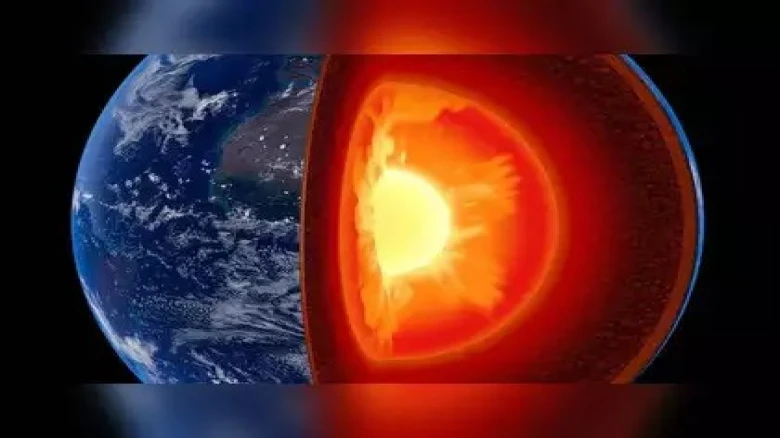While examining the Earth to determine the source of its water, scientists discovered a sizable water reservoir.
Digital Desk: A large water reservoir beneath the surface of the earth has been found, according to researchers at Northwestern University in Evanston, Illinois. Around 700 kilometers below the surface sits this concealed underground water supply.
While examining the Earth to determine the source of its water, scientists discovered a sizable water reservoir. Scientists announced their discovery of the massive ocean beneath our feet in a 2014 research titled Dehydration melting at the top of the lower mantle.
Located 700 kilometers below the surface in the mantle, the ocean is concealed by a blue stone called ringwoodite. Between the surface of the Earth and its core is a layer of hot rock known as the mantle.
Oceans might have slowly seeped out of the early Earth's innards, according to a different theory sparked by the reservoir's magnitude. Triple the volume of all the planet's surface oceans combined, the subsurface mega water body is enormous.
"It's solid proof that water originated on Earth," Northwestern University's Steven Jacobsen told New Scientist back in 2014. On social media, the discovery is currently trending.
The seismic waves from more than 500 earthquakes were analyzed by Jacobsen's team using 2000 seismometers. These waves can be felt at the surface after traveling through the center of the Earth.
According to what Jacobsen told the magazine, "They make the Earth ring like a bell for days afterwards."
They were able to identify different types of rock by measuring the wave speed at different depths. Waves slowed on moist rock, revealing the presence of water.
"This deep reservoir is something for which we should be thankful. The only area that would be protruding would be the tops of the mountains if it weren't there," according to Jacobsen.
Further research conducted in 2014 by researchers at the University of Alberta in Edmonton, Canada, supports Jacobsen's findings. The researchers examined a diamond that had been transported to the surface of the Earth by a volcano from the Earth's transition zone and discovered that it included water-bearing ringwoodite.
Situated between around 410 and 660 kilometers (250 and 410 miles) below the Earth's surface, the transition zone is a region situated within the mantle of the planet. Temperature, pressure, and mineral composition all significantly alter at this boundary, which separates the upper and lower mantles.

Leave A Comment